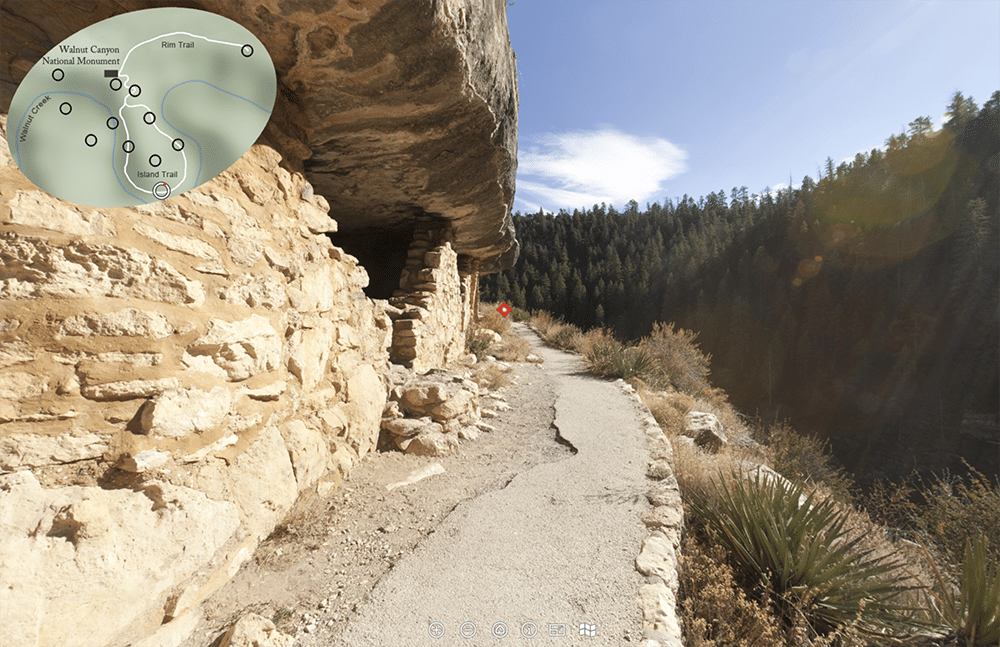The best way to experience Walnut Canyon National Monument is to be there in person, ducking through stone doors, peering through windows and looking into the steep canyon that the prehistoric Sinagua culture made their home.
The second-best way is the Southwest Virtual Museum, a partnership between NAU archaeologists and the National Parks Service (NPS) that brings the treasures of the northern Arizona landscape onto computer screens around the world. And it’s growing—a new grant from NPS will fund the creation of a 3D model of sites along the Island Trail inside of Walnut Canyon, including the 9-Room Site, the largest and most intact site at the monument.

Leszek Pawlowicz, an assistant research professor in the Department of Anthropology and current webmaster of the Virtual Museum, said the 9-Room Site was occupied in the 12th and 13th centuries by a people that archaeologists call the Sinagua; their descendants still live in the American Southwest and refer to their ancestors as Hisatsinom, meaning “ancient people.” This site is open to the public, but it’s not accessible to people with mobility issues, those who may struggle with the steep trail out and back or the high altitude.
That is the motivation behind the entire museum, which began in 2009 as a virtual visitor’s center to sites in northern Arizona, including Walnut Canyon National Monument; Wupatki National Monument; Tuzigoot National Monument; Montezuma Castle and Well National Monument; Grand Canyon National Park; and Tonto National Monument. NAU faculty and graduate students in archaeology continue to add photos, 3D imaging and virtual tours of the sites, various trails, as well as a variety of artifacts, including pottery, shell ornaments, tools made from bone and more.
“The site acts as an interpretive and reference resource for those interested in learning more about Southwestern prehistory, with a smaller amount of historic material,” Pawlowicz said. “This includes both the general public who may just be interested in learning more about the native cultures of the Southwest, and professional archaeologists who use the site as a general reference.”
Future models created will use Structure from Motion photogrammetry, in which many photos are taken from different angles, then a computer program processes the photo into a 3D model. The work also includes other sites on the Island Trail—more on that in a minute—and sites on the rim like the Anniversary Site and the historic Ranger Canyon as well as sites that are only accessible through ranger-led tours.
Explore the Southwest Virtual Museum from your couch.
There’s no water in Walnut Canyon anymore—at least, not very often—so the “island” isn’t what we would typically expect of the word. Rather, it’s a small mesa separated from the main sides of the canyon that contains multiple masonry habitation sites in rock overhangs below the top and around the perimeter. The Island Trail takes visitors to the mesa and around the Island to see all the prehistoric sites, but it is steep and potentially difficult for visitors to undertake. A virtual tour makes it accessible to anyone.
A virtual tour of the 3D model of the 9-Room Site will be online by mid-2024, with the full Island Trail virtual tour complete by mid-2025.
Heidi Toth | NAU Communications
(928) 523-8737 | heidi.toth@nau.edu




